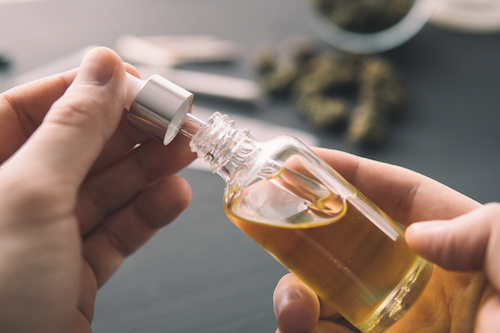A buyer-beware study, from Massachusetts General Hospital (MGH), shows that medical cannabis products may be poorly labeled and do not always represent accurate levels of actual THC or CBD content. The JAMA Network Open study points out that this can be particularly important when the psychoactive metabolite Δ9-tetrahydrocannabinol (THC), the metabolite responsible for the “high,” is present in medical cannabis products labeled to be CBD only.
In this study, researchers analyzed urine samples from nearly 100 patients enrolled in a clinical trial of the effect of medical cannabis for anxiety, depression, pain or insomnia. The purpose of the study was to see if these products were delivering the ingredients patients expected.
THC or CBD Content Not Always What is On the Label
The results showed no CBD in about a third of the urine samples from patients who said they were using cannabis products that were CBD-dominant or had roughly equal parts CBD and THC. THC was detected in almost 80% of those samples, including among patients who thought they were only receiving CBD. Below are the specifics on the study results.
- Ninety-seven participants (mean [SD] age, 39.6 [14.74] years; 65 women [67.01%]) provided 256 urine samples meeting the criteria for analysis.
- Participants were light users at baseline (53% used less than monthly). After baseline, 39% to 47% used 3 to 4 days per week, 15% to 20% used 5 to 6 days per week, and 29% to 45% used daily.
- At least 1 cannabis metabolite was detected in 220 samples (85.9%) (Table 1). Among participants who reported using CBD-dominant or equal CBD-THC products, there was no detectable CBD metabolite in 10 samples (30.3%) and 20 samples (37.0%), respectively (Table 2).
- THC was detected in 26 samples (78.8%) from participants reporting use of CBD-dominant products. Among samples from participants reporting THC-dominant or equal CBD-THC products, no THC metabolites were present in 13 samples (10.9%) and 19 samples (35.2%), respectively.
- Although vaping was the most common method of administration, 27 samples (19.7%) from participants who reported vaping contained no measurable cannabinoid whatsoever. CBD metabolites were more likely to be detected in participants who used oral than vaped (odds ratio [OR], 3.01; 95% CI, 1.58-5.74; P < .001) or smoked (OR, 2.99; 95% CI, 1.38-6.47; P = .005) products.
- THC metabolites were more likely to be detected in participants who used oral (OR, 3.56; 95% CI, 1.42-8.96; P = .007) and smoked (OR, 3.42; 95% CI, 1.26-9.27; P = .02) products than in vaped products.
“People are buying products they think are THC-free but in fact contain a significant amount of THC,” says Jodi M. Gilman, PhD, the paper’s lead author and an investigator in the Center for Addiction Medicine in MGH’s Department of Psychiatry. “One patient reported that she took a product she thought only contained CBD, and then when driving home that day she felt intoxicated, disoriented and very scared.”
Exactly how the cannabis was consumed mattered, too. About 20% of patients who reported that they were vaping their medical cannabis had no detectable levels of THC or CBD metabolites in their urine samples. This suggests that some vaping devices may not heat cannabis products sufficiently for patients to even inhale the active ingredients.
“A lot of questions about the content of the products and their effects remain,” says Gilman. “Patients need more information about what’s in these products and what effects they can expect.”
The findings of this cohort study are consistent with those of a similar study of products purchased in California and Washington or which more than half were incorrectly labeled. As with other newly emerging dietary supplements, this new study calls for tighter regulation within the sector so that consumers understand actual THC and CBD content in their purchases and intake. The authors note: “Methodological limitations of this study include participant-determined doses, possible errors in self-report, no analysis of the cannabis products themselves, and individual differences in rate of absorption and metabolism. Products were purchased in Greater Boston dispensaries, so results may not generalize to regions with different regulations.”
Conclusion/ “Approximately one-third of samples from people reporting using CBD-dominant products contained no measurable CBD metabolite. Nearly 1-in-5 samples from those using vaped cannabis contained no detectable cannabinoids. There were no dose-metabolite associations for vaped products. This may indicate that vaping devices may not heat cannabis products appropriately.





